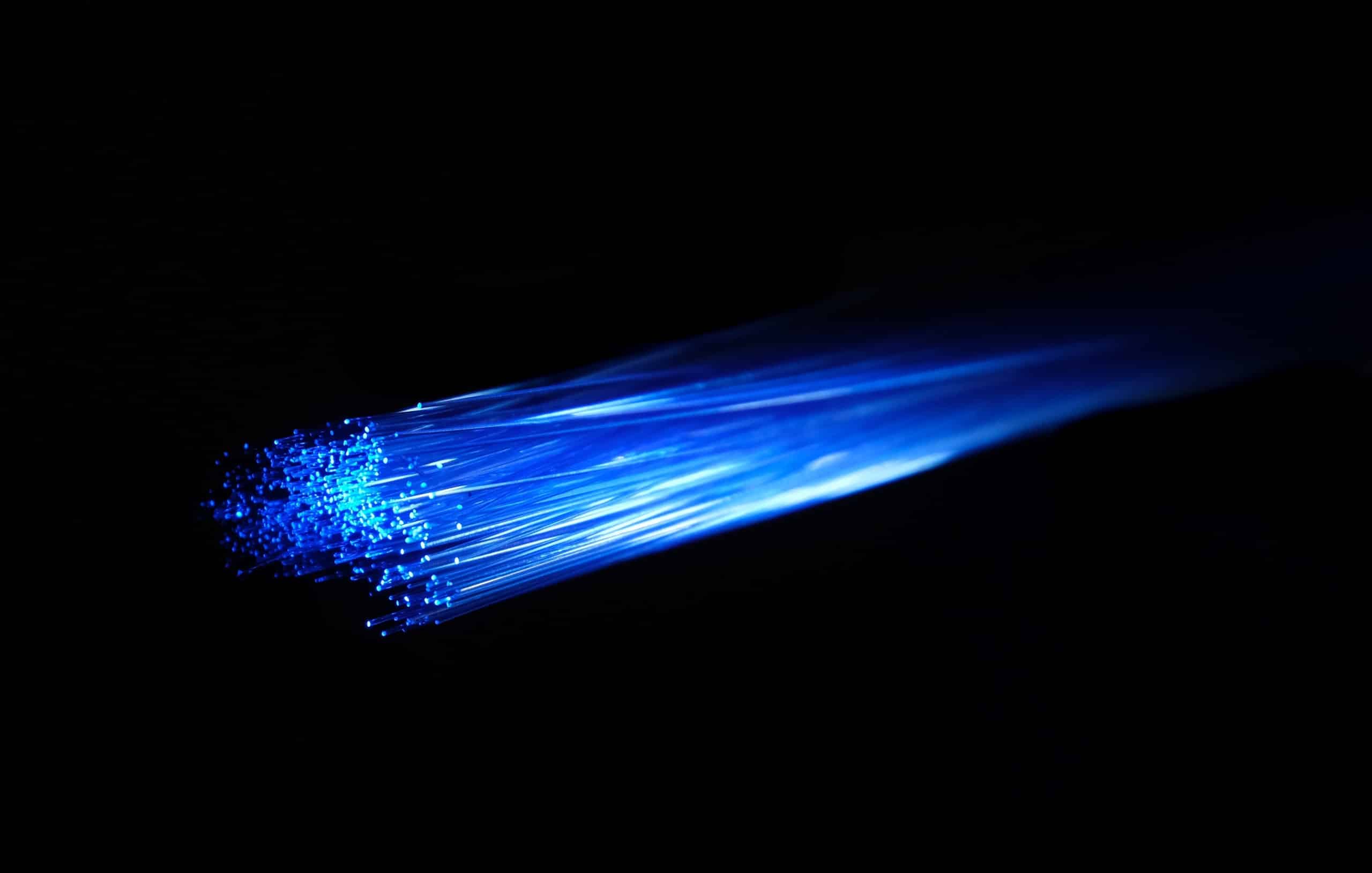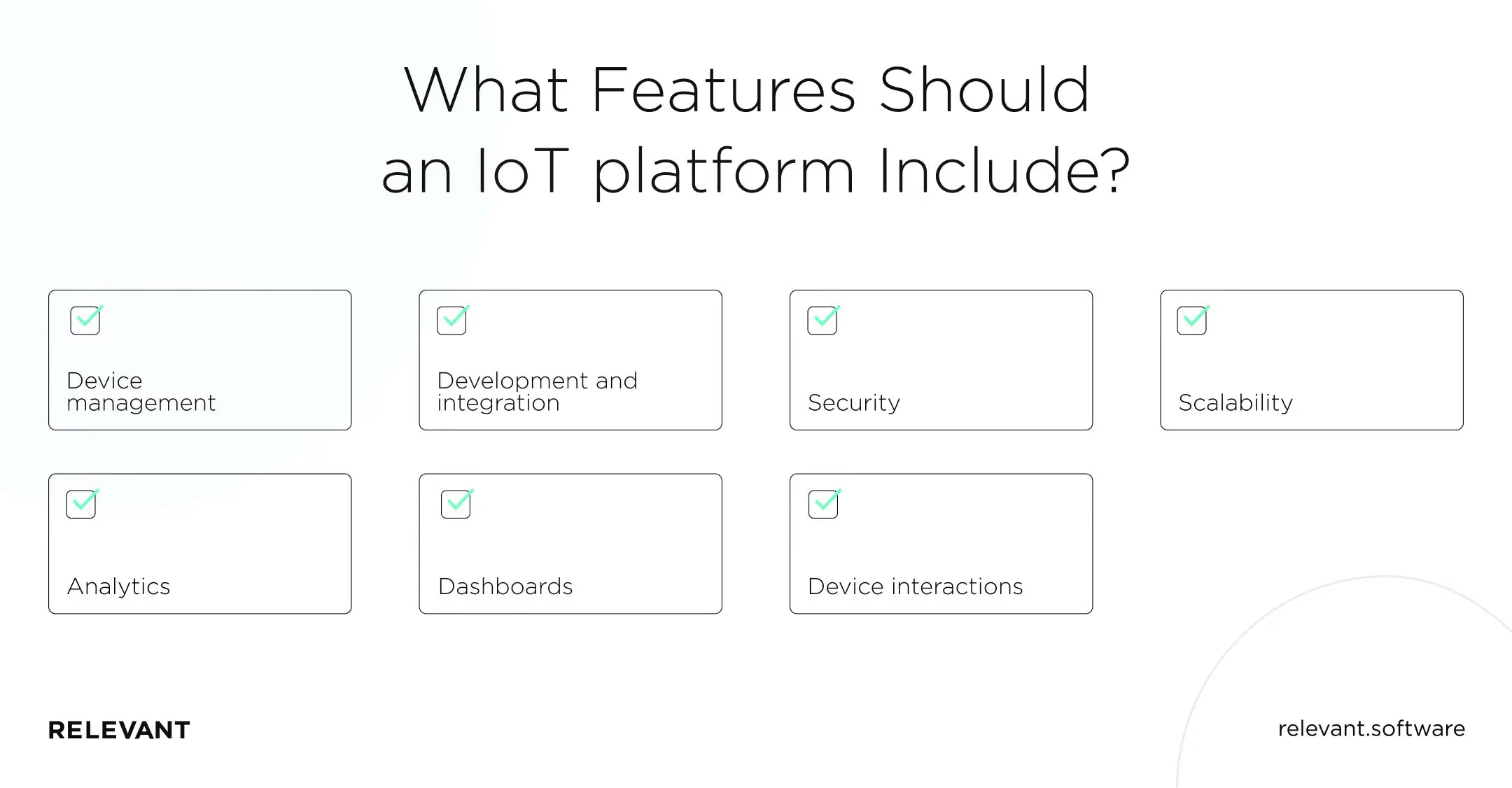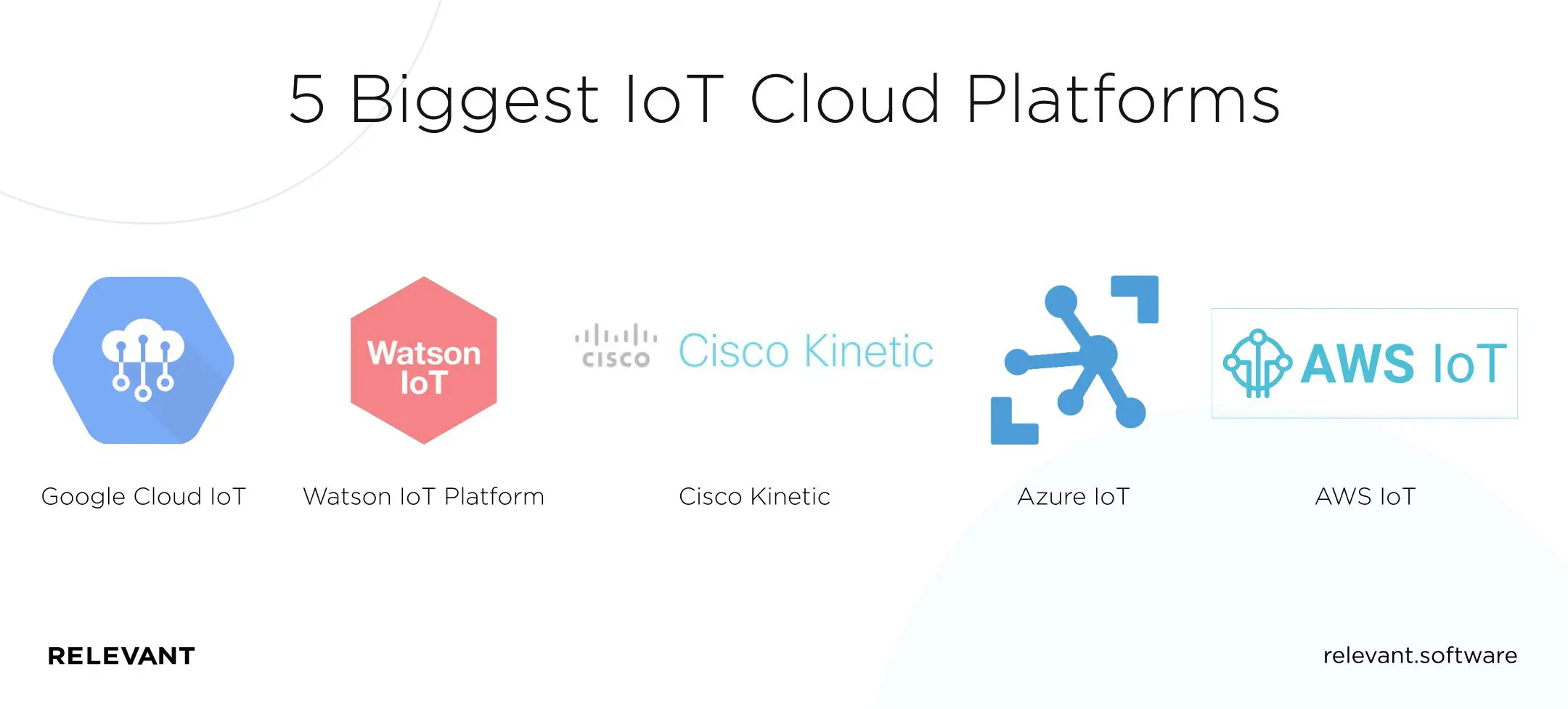AWS vs. Azure for IoT: Which One Is the Right Fit?

Are you looking to set your IoT project in motion but don’t know how to select the right IoT platform? This is a tough call that often boils down to AWS vs. Azure.
Both Amazon and Microsoft know their way around IoT and cloud computing. Whichever you choose, you’ll get a mature end-to-end infrastructure to run your IoT project on.
If you need a more thorough look at AWS IoT vs. Azure IoT to make that decision, read on.
But first, let’s take a step back to get clear on the basics.
Understanding IoT platforms
For businesses, IoT is the harbinger of transformation. While naysayers might have cast doubt on its benefits a decade ago, it’s no longer a question of if you need IoT but how you can leverage it most efficiently.
In recent years, enterprises have exponentially grown in IoT maturity. As many as 61% of companies are now 100% ready to adopt the technology without hitting a brick wall.

If you’re one of those companies and don’t feel like building your own IoT device connection and management system, a cloud IoT platform is your best option.
What is an IoT platform?
Every IoT project comes with an array of software to deploy, field devices to track, and data to capture. An IoT platform marries development infrastructure and cloud services to give you one system to do it all.
For enterprises, an IoT platform is both a toolset to deploy IoT solutions and the way to run them. It brings all components together, from your IoT mobile apps to data sets exchanged between your devices.
Why do you need it?
With a cloud platform optimized for IoT, you can:
- Establish connections between your IoT software, hardware, and the cloud
- Set up storage, analytics, event stream processing, and IoT big data solutions
- Break down insights and feed them further to trigger target actions
- Enable data processing at the edge
- Monitor, update, and manage your sensors, appliances, and other IoT devices
- Use field-tested IoT development services to roll out your solution
As an added advantage, such a feature-rich platform can help you overcome any hurdles you may encounter as your IoT efforts take shape. It gives you direct control over your endpoints and apps, reinforces security, and fills a skill gap with out-of-the-box functionality. Plus, platforms like AWS and Azure clouds have you covered for scalability without you having to build anything on your premises.
How does it work?
Whether you weigh up Amazon AWS vs. Azure vs. Google Cloud or any other cloud environment for IoT, it is Platform as a Service (PaaS) that you’re actually looking at. PaaS works by providing you with IoT app development infrastructure, collaborative tools, and cloud services that you can leverage for your IoT solutions.
But where does PaaS sit in the entire IoT ecosystem? Right in the middle of the processing layer.
There’s no IoT ecosystem without an IoT platform like PaaS. It’s a bonding agent for your project that is anchored between its other elements, including devices, data transfer channels, and API-connected apps. That’s why it acts as a data hub for decision-makers and a command unit for developers, allowing your teams to control things as they see fit.
What features should a go-to IoT platform include?
When you compare cloud platforms for IoT, you’re juxtaposing their core features. Here are some of those that every worthwhile option must have:
- Device management: all those functions that allow you to monitor, update, add, and disable your IoT devices, from kitchen appliances to wind turbines
- Development and integration: the tools, SDKs, and Internet of Things development services you need to launch a successful IoT project
- Edge computing: the capabilities of an IoT platform to bring data processing to where your devices are and break down latency barriers
- Security: authentication mechanisms, authorization tactics, and data exchange protocols that leave no loopholes in your IoT solution’s security
- Scalability: the depth and coverage of cloud services that let you connect more devices without platform restrictions
- Analytics: services to gather data from your devices and declutter them, resulting in meaningful metrics
- Dashboards: customization options to organize your workflows, turn analytics data into easy-to-digest charts, and more
- Device interactions: protocols that an IoT platform supports to enable your devices to send and receive data

If you can’t wait to explore these features further in Microsoft Azure vs. AWS, go straight to the head-to-head comparison. But if you want to grasp the big picture, let’s review the market in general.
IoT market trends and dominant players
The IoT market has got wings, and nothing can stop it from flying high. Need some proof? Experts estimate the market will soar to over $1.38 trillion in value by 2026, outperforming economies like the Netherlands, Switzerland, and the UAE.

There’s an easy explanation for that. Enterprises keep pumping money into IoT, consumers gain more value from connected devices, and governments are joining the ranks of adopters.
It’s not that the IoT sector is just trendy. Along with digital transformation, the efficiency benefits of the connected ecosystem are too huge to leave on the sidelines. Whether you’re treating patients or producing drilling rig parts, you can ride the IoT wave to redefine productivity. Most likely, if you don’t adopt the technology now, you’ll have no other choice but to catch up in the future.
Recent trends set off the growth of the IoT sector at an even faster pace than it may seem. Here are some of those:
- The rising need to deliver healthcare services remotely
- A tremendous amount of data collected by the growing number of smart devices
- Large-scale automation of manufacturing facilities
- The sharp focus on sustainability and reduction of wasteful processes
- New ways to speed up data transfer with 5G
Today’s biggest cloud service providers are stepping up to respond to these trends. Meet the top-5 market leaders below.

Google Cloud IoT
Google’s IoT offering is a well-built addition to its renowned cloud—GCP. It’s beefy enough to power your IoT project for millions of devices through IoT Core and gather metrics that you can pair with ML models using BigQuery. Google Cloud IoT is also known for its big data tools and Google Maps Platform that showcases your devices with real-time locations for monitoring and analytics.
With functionality like that, Google is one of the biggest rivals to Amazon and Microsoft for IoT. However, it comes third in the AWS vs. Azure vs. Google Cloud race as the youngest platform in the pack.
Watson IoT Platform
IBM shakes up the industry with several IoT products. Its Watson IoT Platform fares pretty well against rival services, including Microsoft and Amazon IoT offerings. That’s thanks to easy-to-use management dashboards and cognitive APIs. Watson IoT Platform also brings ML to data analytics and lets you stay on top of insights by visualizing incoming data.
Cisco Kinetic
Rather than being a fully-featured development and management platform, Cisco Kinetic doubles down on IoT data operations. You can use it to connect wired and wireless devices and manipulate data in any way you want. Cisco’s focus on fog computing is strongly felt as you bring computing closer to data capture points and deliver configurations to your apps with less hassle.
Azure IoT
Microsoft knows what’s what in terms of completeness. If you get started with Microsoft Azure IoT, you won’t need to search for additional IoT services, no matter the number of your devices and use cases. This platform comes with IoT Hub for management and deployment, IoT Central for development, Time Series Insights for detailed visualizations, IoT Edge for edge computing, and more. Digital twins and security maintenance? It’s all there.
AWS IoT
AWS Internet of Things technology is all-encompassing. Arranged into ten IoT services, AWS is considered the most comprehensive platform for small and large IoT solutions—be it for a car-making plant or a toaster. You can use it for device management, deployment, data storage, analytics, edge operations, and other tasks while benefiting from integrations with Amazon’s major cloud services.
AWS IoT vs. Azure IoT: Pros and cons
Amazon’s and Microsoft’s offerings are the most popular picks among the top-5 IoT platforms. If you were to analyze the AWS vs. Azure market share as infrastructure providers, you’d see them having their day with 31% and 22%, respectively.
Azure vs. AWS by key advantages and downsides
So AWS leads the pack, including from the IoT perspective. That’s because IoT adopters can’t resist the pros of the platform:
- A variety of analytics, connectivity, and IoT software product development services
- Reliable infrastructure that can scale to any level
- Unmatched range of SDKs that help with mobile and server-side IoT solutions
- A great option for AI integrations
- Access to key cloud services on AWS, including storage and computing
- Wide hardware compatibility thanks to Amazon’s device manufacturer partnerships
- More free offers for IoT than with Azure

Despite having many Free Tiers for connected devices and messaging, Amazon isn’t a hero in the Azure vs. AWS pricing clash. That’s where the cons of AWS take their toll:
- Some IoT services may be more expensive for the long haul if you fail to optimize costs from day one
- Harder to set up for first-timers
Then there’s Azure. When building your IoT solution on this platform, you can expect four tangible pros:
- Easy-to-navigate development and deployment user interfaces
- Great for .NET projects
- Comes with a dedicated service for digital twins
- Access to Azure Functions for edge tasks
- Many handy tools when using Windows for IoT
On the downside, the cons of Azure compared to AWS include:
- Fewer IoT offerings
- More hardware compatibility restrictions
- Less mature for AI capabilities
- Limited Free Edition plans
With that, AWS is ahead in terms of performance, giving you more capabilities in its services. Let’s take a closer look.
Azure vs. AWS by the range of IoT services
What an IoT platform has to offer is the first thing to consider when putting AWS vs. Azure vs. Google vs. any other option on the scales. And that’s where AWS tips them in its favor with as many as ten IoT services.
| AWS IoT services | |
|---|---|
| FreeRTOS | A freely available operating system that comes with a kernel to unite microcontrollers for edge devices. |
| AWS IoT Greengrass | Another software for edge processing that also allows you to configure and deploy IoT products. |
| AWS IoT Core | An IoT operations management center from where you can connect your devices and interact with data. |
| AWS IoT Device Management | A device-agnostic service to manage your devices, from tracking to rolling out updates. |
| AWS IoT Device Defender | A security service to take care of authentication, authorization, data exchange, and similar tasks. |
| AWS IoT 1-Click | One-click way to enable target actions on your devices by connecting them with AWS Lambda. |
| AWS IoT Analytics | Everything you may need for IoT data analytics, from processing to custom analysis. |
| AWS IoT Events | A service that lets you take action when a certain event serves as a trigger, based on your IoT data. |
| AWS IoT SiteWise | A dedicated service for industrial IoT to bring equipment data to AWS. |
| AWS IoT Things Graph | Drag-and-drop functionality to bridge the gap between different IoT devices and set up workflows. |
In its attempt to keep the same pace, Azure offers eight services, but from the runner-up position. Here they are.
| Azure IoT services | |
|---|---|
| Azure IoT Hub | A communications center for devices and apps, plus management and updates. |
| Azure IoT Central | An IoT development infrastructure that also enables connectivity and integrations. |
| Time Series Insights | An analytics service to capture, visualize, store, and spread data from multiple devices. |
| Azure Digital Twins | A dedicated platform to create digital twins of whatever you’re interacting with physically. |
| Azure IoT Edge | An extension of the Hub service to move your IoT processes to the edge. |
| Azure Sphere | A security service that involves Microsoft hardware chips to eliminate IoT device vulnerabilities. |
| Windows IoT | A Windows-based development platform, complete with tools, resources, and Windows support. |
| Azure RTOS | A multi-component operating system for basic devices, available for free. |
How do Azure offerings stack up against those provided by AWS in terms of the main features you want your IoT platform to have? The differences may not be obvious, but they do exist.
Microsoft Azure versus AWS for the features that matter
As long as Amazon and Microsoft continue to strive for superiority, you’re guaranteed to reap the rewards. As of today, however, one platform has the edge. See what this means for you:
Device management
Whether your devices are small and few or complex and abundant, AWS has the capabilities you need. They start with shadows for device states in AWS IoT Core and extend to remote monitoring and security in Device Management and Device Defender. Together, they help you take care of your devices at scale and in more ways than Azure’s Hub service can offer.
Development and integration
Both platforms are replete with tools for development, configuration, monitoring, and deployment. But AWS SDKs cover more essentials for tailored applications and IoT devices (Embedded C, Arduino Yun, JS, and more). These can work wonders when in the right hands, particularly if you have a dedicated development team to integrate IoT. That said, Azure’s Visual Studio may level the playing field, at least to some degree.
Edge capabilities
FreeRTOS and Greengrass set AWS apart in the Azure and AWS cloud war as they include an array of purpose-built libraries to help you tap into the edge. You don’t have that flexibility with Azure IoT Edge that is limited to Microsoft-specific containers. AWS has a broader infrastructure to extend its edge computing capabilities across use cases so that you can save on data storage and unnecessary cloud tweaks.
Security
We wouldn’t plunge into this comparison if any of the platforms were insecure for an IoT project. Azure and AWS are 100% reliable; otherwise, their combined market share would be below zero. They both enable you to set up two-way authentication, permissions at granular levels, unique identities, and risk-free data exchange processes. TLS connections and encryption are fused into all cloud layers, so both are winners here.
Scalability
AWS has more IoT offerings and allows you to set your project up for automated scaling more easily than Azure. Integrations with Lambda and other services also play a role when you need additional resources for your new devices via the built-in Rules Engine. There are no limits on how much data can be exchanged, and pricing is more flexible as you advance.
Analytics
Whether you’re defining patterns or predicting equipment breakdowns, AWS helps you make the most of data that seems useless when it comes in. For starters, it provides SDKs to arrange data flows from your devices to the analytics service. AWS has also completed its offerings with SiteWise, which is especially valuable for industrial use cases. However, Azure does strike a chord with its Digital Twins.
Dashboards
It takes time to get used to the AWS management console. It may feel overwhelming for novices, in part because it’s bloated with features. Azure’s central user interface is more intuitive for newcomers, and it has more customization options for visualizations to ease your analytics tasks.
Device interactions
When comparing communication protocols in the cloud on AWS vs. Azure, the only difference is AMQP. You can use it to set up more than just publish-and-subscribe operations between your devices only on Azure. The gold standards like MQTT, HTTPS, and MQTT over WebSockets make for an easy hit on both platforms.
Wrapping-up: So which is better: Azure or AWS?
There are two ways to slice it. The short one: if you’re looking for a comprehensive IoT platform for an IoT project of any size, lean toward AWS.
The right one: share your project details with Relevant before getting into either platform. We’ll look into AWS vs. Azure for IoT from your company’s perspective so that you know your choice is aligned with your needs.
Chances are, AWS will still win the day. But contacting Relevant is the only way to make the IoT platform commitment with confidence. Plus, we can open the door to Ukraine outsourcing for your business. So get in touch!



